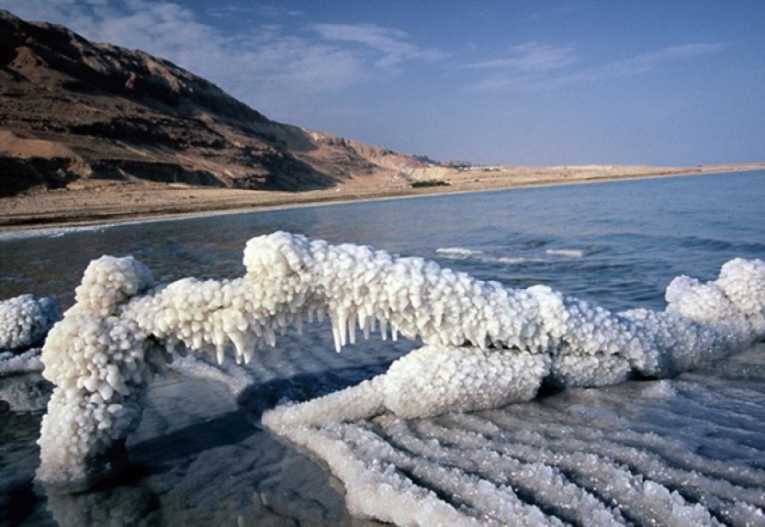There is little doubt in scientific minds that the world is getting warmer. This is particularly evident in the Middle East, but one important question is whether this is something new or whether it is part of some larger cyclical pattern.
The answer to this question is one of the hoped for results that will be follow from an important international study involving the drilling a hole 300 metres below the bed of the Dead Sea in Israel.
The study is being led by Professor Zvi Ben-Avraham of the Dead Sea Research Centre at Tel Aviv University. This innovatory study involves drilling with a special rig to produce core samples that will enable researchers to collect a massive amount of information about climate change and earthquake patterns, effectively giving them a glimpse back in time.
Drilling is taking place about five miles offshore near Ein Gedi and researchers will drill through four ice ages, epic sandstorms and the biggest droughts in history. “Our aim,” said Professor Ben-Avrahim, “is to get a complete record in unprecedented resolution – at one year intervals – of the last 500,000 years.”
This is by far the largest Earth sciences study of its kind that has ever taken place in Israel and the hope is that the evidence gained will help the world's climatologists to build a clearer picture of climate change by combining it with evidence gathered from other geological samples elsewhere in the world.
The Dead Sea, at 423 metres or a quarter of a mile below mean sea level, is the lowest place on Earth. “The sediments,” said Professor Ben-Avraham, “provide an 'archive' of the environmental conditions that existed in the area in its geological past.” While the sample being collected is not as deep as those collected by oil explorers it is felt that this core will be something special since it will be kept in an unbroken piece so that records can be traced more accurately.
Hopefully this will lead to better prediction of what's in store for Middle East weather and it should also shed some light on earthquake patterns, which is obviously of particular interest to the Israelis, Jordanians and Palestinians who live on or around the fault line that passes through the Dead Sea region.
This is a unique event and the study is being supported by the Israel Sciences Academy, together with a large number of scientists from academic institutions in the US, Germany, Switzerland, Norway, Japan and other institutions in Israel. Proving that science knows no boundaries, co-operation is also being received from scientists from Jordan and the Palestinian Authority.
Professor Ben-Avraham is particularly interested in the chemical changes that have taken place to the Dead Sea sediment during the course of the past half million years, but other researchers represent a wide variety of disciplines from chemistry to environmental science, and just about everything else in between. Each will be given different parts of the core to analyse and will use their particular expertise to contribute to the broad picture of this interesting project.
Image courtesy of: tourism-jordan.com










